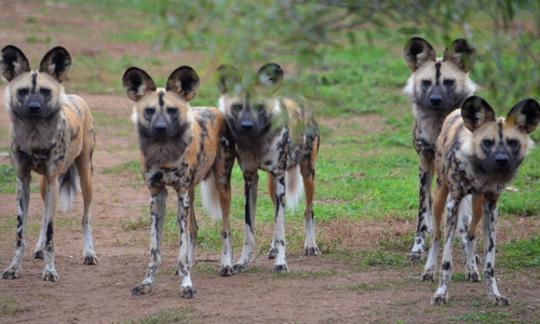African Wild Dog
One of Africa's most successful hunters, the African Wild Dog is also one of the most misunderstood animals on our planet.
African Wild Dogs go by many names—‘Hunting Dog,’ ‘Cape Hunting Dog,’ and the ‘Painted Dog,’ due to the unique patterns along their bodies.
These agile, social animals have large, bowl-shaped ears and a long tasselled tail with a white tip. They’re classified as endangered.

The African Wild Dog isn’t closely related to the jackal, wolf or domestic dog.
They aren’t scavengers—they’re voracious hunters, and can pursue their prey relentlessly.
African Wild Dogs have an acute sense of smell, but they prefer to use sight to hunt.
Their menu includes small and medium antelope, warthog, zebra and ostrich.
Once, African Wild Dogs lived all through sub-Saharan Africa. Now, they’re limited to about six countries in southern and east Africa.
Human activity and habitat loss have caused their populations to drop, and it's estimated that there are less than 6,500 African Wild Dogs remaining in the wild.
Zoos Victoria supports African Wild Dog conservation through our International Grants Program.
Facts about African Wild Dogs
- African Wild Dogs live in highly organised packs, and are some of the most social and tight-knit of all mammals. They take good care of their young, injured and sick.
- Their speed comes from their special toes that have strong, non-retractable claws that increase their grip and allow them to turn quickly.
- As African Wild Dogs grow older, they go bald! You can spot elderly wild dogs by the large, dark patches on their bodies.
